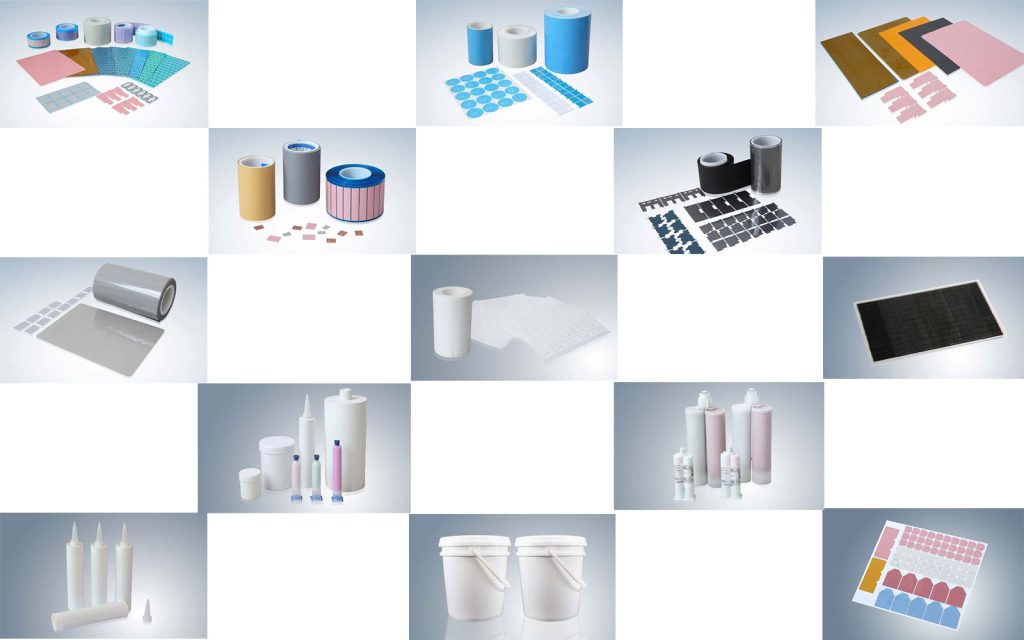In the world of electronics and high-performance computing, thermal interface materials (TIMs) play a crucial role in improving heat transfer between surfaces. Without proper heat dissipation, electronic devices can overheat, leading to reduced efficiency, performance issues, or even permanent damage. But what exactly are thermal interface materials, and what types exist?
1. What Are Thermal Interface Materials (TIMs)?
Thermal Interface Materials (TIMs) are substances that improve the thermal connection between two surfaces, typically between a heat-generating component (such as a CPU or power transistor) and a heat sink or cooling solution. Since microscopic surface imperfections can trap air, TIMs help fill these gaps to enhance heat conduction and prevent overheating.

2. Types of Thermal Interface Materials
There are several types of thermal interface materials, each designed for specific applications and thermal requirements. Here are the most common ones:
2.1 Thermal Grease (Thermal Paste or Thermal Compound)
✅ Description:
Thermal grease is a highly conductive paste applied between surfaces to eliminate air gaps and improve heat dissipation.
✅ Key Features:
- High thermal conductivity
- Easy to apply
- Non-permanent solution
✅ Applications:
- CPUs, GPUs, and heat sinks in computers
- Power transistors and LEDs
2.2 Thermal Pads
✅ Description:
Thermal pads are solid, compressible pads that come in pre-cut shapes and provide uniform thermal conduction.
✅ Key Features:
- Easy to install (no mess)
- Electrically insulating
- Moderate thermal conductivity
✅ Applications:
- Laptops and gaming consoles
- Memory chips and VRMs
- Power modules
2.3 Phase Change Materials (PCM)
✅ Description:
Phase Change Materials (PCMs) remain solid at room temperature but soften or melt at high temperatures, improving thermal contact under heat conditions.
✅ Key Features:
- Transforms for better surface contact
- Higher long-term reliability than thermal grease
- Requires controlled application
✅ Applications:
- High-performance processors
- Automotive electronics
2.4 Thermal Tapes
✅ Description:
Thermal tapes are adhesive-backed materials that bond components together while also transferring heat.
✅ Key Features:
- Double-sided adhesive function
- Provides mechanical stability
- Moderate thermal conductivity
✅ Applications:
- LED modules
- Small electronic components
2.5 Metal-Based TIMs (Liquid Metal & Solder)
✅ Description:
Liquid metal TIMs use highly conductive metals such as gallium or indium to provide extreme heat transfer performance.
✅ Key Features:
- Highest thermal conductivity among TIMs
- Ideal for extreme cooling solutions
- Can be electrically conductive (risk of short circuit)
✅ Applications:
- High-performance CPUs and GPUs
- Overclocked systems
- Aerospace and industrial applications
2.6 Gap Fillers & Thermal Gel
✅ Description:
Gap fillers are soft, flexible materials designed to fill larger gaps while maintaining thermal efficiency.
✅ Key Features:
- Soft and compressible
- Excellent thermal insulation
- Can be used in uneven surfaces
✅ Applications:
- Battery packs
- Power converters
3. How to Choose the Right Thermal Interface Material?
Choosing the right thermal interface material depends on several factors:
1️⃣ Thermal Conductivity – The higher the conductivity, the better the heat transfer.
2️⃣ Application Method – Some materials, like grease, require manual application, while thermal pads offer ease of use.
3️⃣ Electrical Conductivity – If the TIM is conductive (e.g., liquid metal), ensure it won’t short-circuit components.
4️⃣ Durability & Longevity – Some materials, like phase-change TIMs, last longer than thermal pastes.
5️⃣ Mechanical Considerations – For components requiring structural bonding, thermal tapes may be the best option.
4. Conclusion
Thermal interface materials are essential for keeping electronic devices cool and efficient. Whether you choose thermal grease, pads, tapes, liquid metal, or phase change materials, the right TIM will depend on your specific needs.
By understanding the different types of thermal interface materials, you can optimize cooling performance and extend the lifespan of electronic components.
If you’re looking for high-quality TIMs, always consider thermal conductivity, ease of application, and long-term reliability before making a decision.Contact us:https://linzesilicone.com/